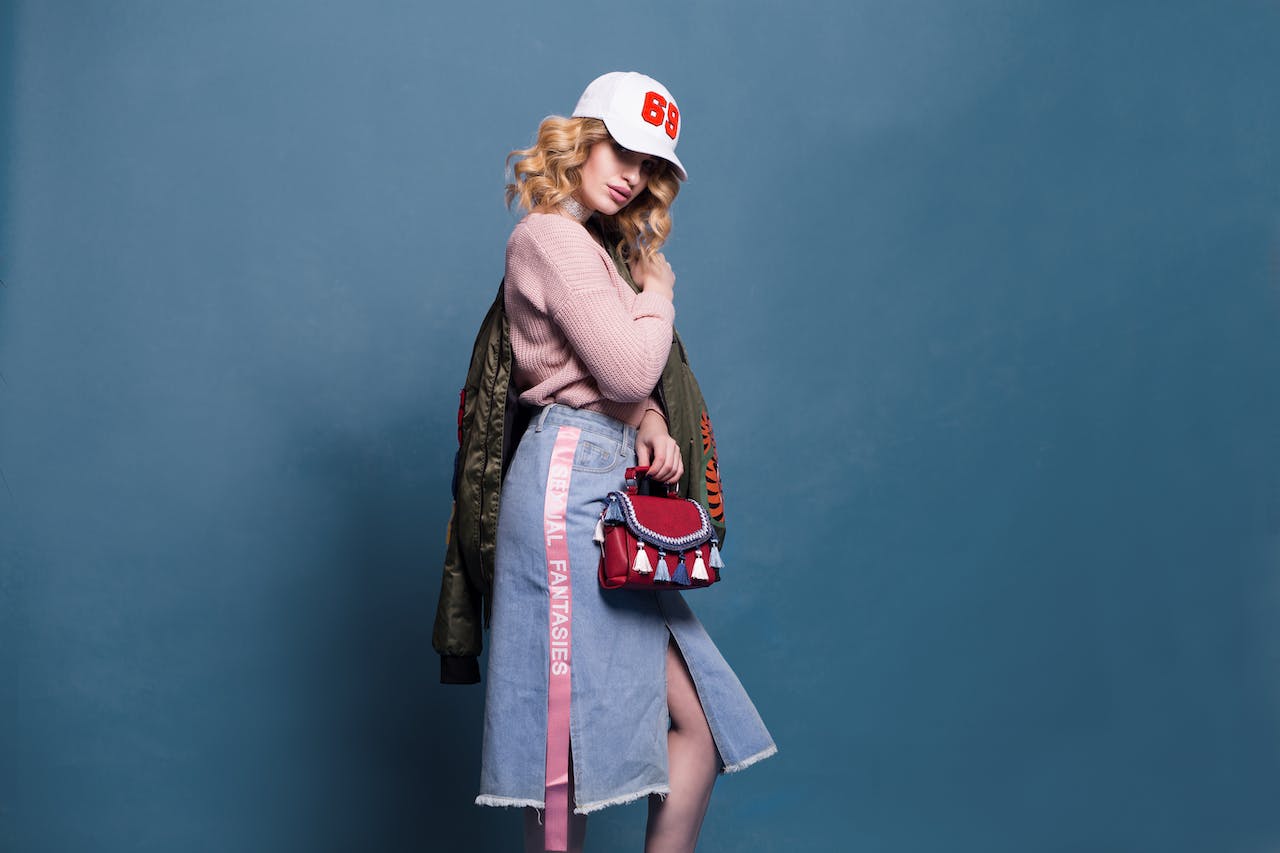Are you feeling bored or stuck with your current fashion style and looking to make a change? We’ve all been there. Whether you’re itching to explore a new trend, update your wardrobe, or simply inject some fresh creativity into your everyday outfits, there are countless ways to change your style. In this article, we’ll guide you through some practical tips and inspiring ideas to help you embark on your style transformation journey. From finding inspiration to experimenting with different looks, we’ve got you covered. So get ready to unlock your fashion potential and discover a whole new side of your personal style!
1.) Change Your Style: Evaluate Your Current Style
Assess your current style
Before embarking on a style evolution, it is essential to take stock of your current style. Look closely at the clothes you wear, the colors and patterns you gravitate towards, and the overall image you project. Take note of your preferred silhouettes, fabrics, and accessories. Evaluating your current style will provide a solid starting point for your style transformation.
Identify what you like and dislike about it
When assessing your current style, it is crucial to identify both the aspects you like and dislike. Are there certain outfits that make you feel confident and empowered? Are there others that leave you feeling underwhelmed or uncomfortable? Understanding what you like and dislike about your current style will help guide your decisions moving forward and enable you to focus on the elements you want to enhance or change your style.
Consider any limitations or restrictions
When evaluating your current style, it’s important to consider any limitations or restrictions you may have. This could be financial limitations, body type considerations, or professional dress codes you need to abide by. Understanding these limitations will help you set realistic goals and make informed choices as you embark on your style transformation journey.
2.) Change Your Style: Set Style Goals
Define your desired style
Once you have assessed your current style, it’s time to define your desired style. Think about the image you want to project and how you want to feel in your clothes. Do you want to appear more professional and polished? Or are you drawn to a more relaxed and bohemian aesthetic? Visualize your ideal style and use it as a guide moving forward.
Consider your lifestyle and personality
When setting style goals, it is important to take into account your lifestyle and personality. Your clothes should not only reflect your personal taste but also be suitable for the activities you engage in daily. Consider the occasions you typically dress for and the specific requirements of your lifestyle. Additionally, your personality should shine through your style, whether that be through bold colors, edgy cuts, or elegant simplicity.
Identify specific elements or trends you want to incorporate
As you define your desired style, pinpoint specific elements or trends that resonate with you. This could be anything from embracing monochromatic outfits to incorporating vintage-inspired pieces. Having a clear idea of the elements or trends you want to incorporate into your style will help guide your research and exploration phase.
3.) Change Your Style: Research and Explore
Follow fashion blogs and influencers
One of the best ways to research and explore new styles is to follow fashion blogs and influencers. These online platforms provide a wealth of inspiration and ideas. Look for bloggers or influencers who align with your desired style and aesthetics. Pay attention to how they put together outfits, the colors and patterns they mix, and the accessories they choose. By following fashion blogs and influencers, you’ll stay up to date with the latest trends and gain new perspectives on style.
Browse through magazines and online platforms
In addition to following fashion blogs and influencers, browsing through magazines and online platforms is a great way to discover new styles and trends. Flip through fashion magazines and tear out pages that catch your eye. Save online articles or Pinterest boards that showcase outfits you find appealing. The more you expose yourself to different styles and ideas, the more you can refine your own style preferences.
Visit stores and try on different styles
While online research is valuable, there is no substitute for trying on clothes in person. Head to local stores or boutiques and experiment with different styles, silhouettes, and fabrics. Take the time to try on items that may not typically catch your eye. You never know what might surprise you and become a new favorite. Visiting stores also allows you to see the quality of garments firsthand and get a sense of how different pieces fit and flatter your unique body.
Experiment with different outfit combinations
Once you have gathered inspiration and tried on various styles, it’s time to experiment with different outfit combinations. Mix and match pieces from your own wardrobe to create new looks. Don’t be afraid to blend unexpected colors or patterns or layer items in unconventional ways. Experimentation is key to discovering what works for you and developing your personal style.
4.) Change Your Style: Create a Mood Board
Gather inspiration from various sources
To visually organize your style aspirations, create a mood board. Collect inspiration from various sources, such as magazines, online platforms, and even photographs you have taken. Look for images that evoke the aesthetic you desire and resonate with your style goals. These can include outfit ideas, color palettes, textures, and patterns.
Use online platforms or physical boards
Mood boards can be created digitally using online platforms like Pinterest or Canva, or you can opt for a physical board using a corkboard or poster board. Choose the method that feels most intuitive and enjoyable for you. The act of curating and arranging images will help you gain clarity on your desired style and serve as a visual reference when shopping or styling outfits.
Include images, colors, textures, and patterns
When compiling your mood board, include a diverse range of images, colors, textures, and patterns. This will help you develop a well-rounded visual representation of your desired style. Pin or save images that inspire you and reflect the aesthetic you want to embody. Consider the emotions or feelings that these images evoke and ensure they align with your style goals.
5.) Change Your Style: Declutter Your Wardrobe
Remove items that no longer align with your desired style
As you begin to refine your style goals, it’s important to declutter your wardrobe. Remove items that no longer align with your desired style or that make you feel uninspired. Be honest with yourself and let go of pieces that you’ve been holding onto for sentimental reasons or because you think you “should” wear them. Creating space in your wardrobe will allow for a fresh start and make it easier to see the clothes that truly represent your style vision.
Donate or sell clothes that are in good condition
Rather than throwing away the clothes you no longer want to keep, consider donating or selling them. Clothes in good condition can find new life with someone else who will appreciate them. Look for local charities or organizations that accept clothing donations, or utilize online platforms like Poshmark or Depop to sell your items. Not only will this make the decluttering process more sustainable, but it can also provide you with some extra funds to invest in your new style.
Identify essential pieces and build a foundation
As you declutter your wardrobe, take note of the essential pieces that remain. These are the versatile, timeless items that form the foundation of your style. Recognizing and keeping these pieces will ensure you have a solid base from which to build and experiment with new outfits. Essential pieces often include well-fitting jeans, a classic white shirt, a tailored blazer, and comfortable shoes that can be dressed up or down.
6.) Change Your Style: Build a Capsule Wardrobe
Focus on versatile and timeless pieces
Building a capsule wardrobe involves curating a collection of versatile and timeless pieces that can be mixed and matched easily. Choose items that can be dressed up or down and that work well with other pieces in your wardrobe. Opt for classic silhouettes and neutral colors that can be effortlessly styled for different occasions. By focusing on versatility and timelessness, you’ll create a wardrobe that remains relevant and stylish for years to come.
Create a cohesive color palette
To ensure your capsule wardrobe is cohesive, select a color palette that complements your desired style. Choose a few core colors that can act as the foundation for your outfits, then consider adding accent colors that add interest and variety. By following a consistent color palette, you’ll find it easier to mix and match pieces and create cohesive looks.
Consider different combinations and layering options
One of the key benefits of a capsule wardrobe is the ability to create multiple outfits from a limited number of pieces. Experiment with different combinations and layering options to maximize the versatility of your capsule wardrobe. Consider the different ways you can style a single item and how it can be layered to create new looks. This will ensure your wardrobe delivers maximum outfit possibilities.
7.) Change Your Style: Experiment and Take Risks
Step out of your comfort zone
As you refine your personal style, it’s important to step out of your comfort zone and try new things. Pushing boundaries and experimenting with different styles, patterns, and accessories is key to growth and evolution. Don’t feel confined to one particular aesthetic or trend but instead embrace the freedom to explore different possibilities. Taking risks allows for exciting discoveries and can lead to the development of a unique and remarkable personal style.
Try new styles, patterns, and accessories
While building your new style, don’t hesitate to try new styles, patterns, and accessories. Incorporate elements that catch your eye and reflect your evolving taste. Experiment with different patterns such as stripes, florals, or animal prints. Venture into new styles, such as bohemian, minimalist, or retro-inspired. Accessories are another area worth exploring. Hats, scarves, belts, and statement jewelry can elevate and complete an outfit, adding a personal touch to your overall style.
Don’t be afraid to make mistakes
When experimenting and taking risks, it’s crucial to embrace the possibility of making mistakes. Not every outfit or combination will be a hit, and that’s okay. Fashion is subjective, and personal style is an ongoing journey of discovery. Learn from any style missteps and use them as learning opportunities. Remember, the most important thing is to have fun and express yourself authentically through your style choices.
8.) Change Your Style: Seek Inspiration from Others
Find style icons or celebrities whose fashion you admire
To further develop your personal style, seek inspiration from style icons or celebrities whose fashion choices you admire. Look for individuals who align with your desired style aesthetic and reflect the image you want to project. Observe their outfit choices, paying attention to the colors, silhouettes, and styling techniques they employ. By studying their fashion choices, you can adapt and incorporate elements into your own style.
Observe their outfit choices and adapt them to your style
When observing style icons or celebrities, it’s important to adapt their outfit choices to suit your personal style. While it’s great to draw inspiration from others, it’s essential to maintain your individuality and showcase your unique personality through your wardrobe. Take note of specific elements or details you appreciate, and find ways to incorporate them into your outfits in a manner that feels authentic to you.
Join fashion communities or forums for further inspiration
Engaging with fashion communities or forums can provide additional inspiration and support as you navigate your style transformation. These platforms allow you to connect with like-minded individuals who share your passion for fashion. You can exchange ideas, seek advice, and gain valuable insights into different styles and trends. Joining fashion communities can also introduce you to new brands or designers that align with your evolving style.
9.) Change Your Style: Invest in Quality Pieces
Choose items made with durable materials
Investing in quality pieces is essential for building a wardrobe that stands the test of time. Look for items made with durable materials and attention to detail in craftsmanship. While quality items may come with a higher price tag, they will last longer and often provide a better fit and feel. Whether it’s a well-tailored blazer, a sturdy pair of boots, or a beautifully crafted handbag, investing in quality pieces ensures longevity and maximizes the value of your wardrobe.
Consider ethical and sustainable brands
As you build your new style, consider supporting ethical and sustainable brands. These brands prioritize responsible manufacturing practices, fair wages for workers, and environmentally friendly materials. Choosing ethically made clothing not only aligns with your personal values but also contributes to a more sustainable fashion industry. Research brands that align with your desired style and values, and make conscious purchasing decisions that reflect your commitment to sustainability.
Focus on timeless pieces that can be worn for years
When investing in pieces for your wardrobe, prioritize timeless items that can be worn for years to come. Classic silhouettes, neutral colors, and high-quality fabrics are key to building a versatile and enduring wardrobe. Timeless pieces such as a well-fitted black dress, a tailored blazer, or a quality pair of jeans transcend trends and can be styled in countless ways. By focusing on timeless pieces, you’ll ensure your style remains relevant and adaptable as fashion evolves.
10.) Change Your Style: Develop Personal Style Guidelines
Create a style manifesto or mission statement
To solidify your personal style, consider creating a style manifesto or mission statement. This can be a written declaration of the overarching principles and values that underpin your style choices. Reflect on the emotions you want your clothes to evoke, the message you want to convey, and the impact you wish to leave. By defining your style in this way, you’ll have a clear set of guidelines to refer back to when making future style decisions.
Define your signature elements or accessories
Developing your personal style involves identifying signature elements or accessories that define your look. Consider the recurring themes, colors, or accessories you want to incorporate into your outfits consistently. These signature elements can become a reflection of your unique personality and style. Whether it’s a love for bold statement jewelry, a penchant for monochromatic outfits, or a fascination with bohemian prints, defining your signature elements will further solidify your personal style.
Establish guidelines for future purchases
As you continue to evolve your personal style, it’s essential to establish guidelines for future purchases. Think about the types of garments, colors, or patterns that align with your style goals. Consider your lifestyle, body type, and the specific occasions or activities you dress for regularly. By establishing guidelines for future purchases, you’ll make more intentional and informed choices, ensuring that every new addition to your wardrobe supports and enhances your personal style.
In your style journey, remember that change your style takes time and experimentation. Enjoy the process of refining and discovering your personal style, and embrace the freedom to express yourself authentically through your clothes. The most important thing is to feel confident and comfortable in what you wear, allowing your style to reflect the amazing person you are.



